On Today’s podcast we’re discussing how to reduce toxins in your home.
Genevieve White is an Environmental Health Coach and advocate for personalized health care. She healed herself from years of chronic fatigue, digestive disorders and generalized pain through extensive detoxification of both her body and her living environment. Now, her knowledge and expertise makes her a go-to resource for people experiencing chronic conditions like autoimmunity, hormone imbalances and chemical sensitivities.
In today’s interview, we discuss simple solutions to reduce your exposure to toxic chemicals commonly found in homes.
You can also check out this link for a free guide to determine what to do about indoor air quality.
Dr. Cates: hi. Welcome to the spa doctor podcast. I’m Dr Trevor cates. On today’s podcast we’re discussing how to reduce toxins in your home. My guest is genevieve white. She is an environmental health coach and advocate for personalized healthcare. She healed herself from years of chronic fatigue, digestive disorders, and generalized pain through extensive detoxification of both her body and her living environment. Now her knowledge and expertise that makes her a go to resource for people experiencing chronic conditions like autoimmunity, hormone imbalances, and chemical sensitivities. In addition to individualized coaching genovese rights for Friday of natural health websites. So on today’s podcast we delve into why toxins and the home are so important to avoid how they may impact your health and top ways to reduce them today. So please enjoy this interview. Genevieve would say great to have you on my podcast. Welcome.
Genevieve: Thank you. It’s a pleasure to be here.
Dr. Cates: Yeah. So you are an environmental health coach and a lot of people probably aren’t even aware of what that is. So explain to everybody what, first of all, what led you on the path to become interested in this? Why was it so important to you? Because like a lot of people that are health coaches and doctors in functional medicine, Nutritional Medicine Lens, there’s a story behind what gets people there. They have a personal journey. So, and I know you have your. So tell, tell everybody what, what you’ve been through.
Genevieve: Yeah, for sure. We do all have our journeys don’t, um, mine started in early 2010. I, I’m basically just got very sick very suddenly. I had a lot of um, my, my abdomen was very tender and I had a lot of digestive issues. I was severely fatigued to the point where sometimes I can barely walk, you know, I would just like collapsed suddenly, sometimes just extremely fatigued, a lot of generalized pain. I’m very moody
Speaker 3: and it took two years to find out that I had high levels of several different heavy metals in my body as well as pesticides and other toxins. So it over two years and going to several of them, I went to 16 different practitioners during that time, a ton of different protocols. And then finally found someone that said, oh, that sounds like mercury to me. So we did some testing. She sent me to an environmental health specialist who tested my genetic snips or my mutations to kind of tell, um, how I was detoxing and methylating and it just turned out that I don’t detox well, so I just had a lifetime of these toxins kind of built up in my body and while I was going through my journey, it took another year and a half after that to gradually, safely detox everything and heal my gut. And as I was going through that, I just realized that there’s a lot of people out there that are dealing with chronic illness that don’t have access to this information. So I made the decision to get certified as a health coach and that’s what I’ve been doing ever since.
Speaker 2: Yeah. And so with the, um, being certified as a health coach then you wanted to specialize focus in on this environmental aspect of things, right?
Speaker 3: Right. Yes, absolutely. So I’ve done a lot of kind of self directed education because there’s not a ton of resources out there for people who aren’t practitioners. Um, but I’ve had found some courses that I’ve taken as well and just, you know, there’s so much out there, I learn more every day.
Speaker 2: Yeah, yeah, absolutely. And it’s interesting with some of the symptoms that you’ve experienced and what you went through with your own health challenges. It is interesting when people have environmental toxicity issues, they exposures that it can, that symptoms that develop can mimic a lot of other diseases. So that’s partly why you probably saw so many different practitioners because one symptom would what looked like one thing. So you’d probably end up with one specialist and they would tell you then you need to do this. But nobody was, I imagine at the beginning nobody was looking at you as a whole picture.
Speaker 3: Yeah, that’s absolutely right. In fact, when I went, the first doctor I went to was my primary care md and he told me to eat more bread. That was his solution because I was craving bread because of my digestive problems. Um, so yeah, it was definitely a long journey and there’s so many varied symptoms that bottom gi doctors where I was getting the same, you know, take five or take probiotics. Um, you know, uh, some chiropractors just a lot, just a variety of different types of practitioners before I finally found the one that, that was able to kind of piece it together for me and get me on the right track.
Speaker 2: Right. And um, so the, um, the exposures that you had were, where did they come from?
Speaker 3: Well, they came from everywhere. I mean, there doesn’t seem to be one, you know, um, situation. There wasn’t an event that, that made me sick, although I will say that it started when I was working in an office building and there was a remodel happening next door, so there was a lot of paint fumes and that sort of thing that was coming in right by my desk. My desk happened to be by the front door and people would walk by and say, um, you know, how can you stand sitting here? But
Speaker 3: um, you know, but you know, you just kind of get used to it when you, when you, when there’s a smell around you just get used to it. And I didn’t realize what it was doing to me, but then we found that, you know, the, the metals I’m in, the mercury probably came from the failings that I had and I was a tooth grinder and you know, it’s just kind of all over the environment. I had sent our water, it’s in our soil lead because I grew up in a home that was built in the, like in the thirties, so before they banned would paint. So there was, you know, just paint in the dust in the house. Um, you know, it’s just kind of gradual exposures over time that my body wasn’t able to process. And you know, I think it’s worth noting that there’s probably a lot of people that have these snips that don’t realize it. But also, you know, our bodies, we have this kind of natural ability to detox but not at the level that we’re exposed to right now. I mean, the average baby is born with like 200 different chemicals in their body to start with. So it’s really, you know, it’s not just, um, you know, that my body isn’t able to process it. Really. No one’s body is made for the amount of exposure that we have.
Speaker 2: I completely agree. It is. Um, it is really important to look, I believe at environmental exposures more than ever now and I because we’re exposed to more toxic chemicals than we ever have been because of the ones that, you know, we’re uh, we have a history of that maybe have been banned, but they still, even if they’ve been banned, that they can continue to exist in our environment. And then new toxic chemicals being introduced into our environment all the time. And we’re exposed to more and more of these and our air water, food, personal care products in our homes, in our workplaces, hobbies, all of these different places. And I think that we ignore a lot of people. The tendency is to ignore these things just because it’s part of modern living. But I think it’s important for people to really pay attention on all the different ways that you can reduce exposures because that is the first thing that we need to do is to look at the ways that we’re exposed and reduce our exposure.
Speaker 2: And then of course we want to figure out how can we improve our body’s detoxification pathways to, um, to make sure that we’re able to remove the toxins that we’re exposed to because we’re, we can’t have 100 percent or even 90 percent of clean environment anymore. It just doesn’t exist anywhere in the world. And so I, I know that you now help coach people on how to be aware of what’s in their environment. And so let’s talk about some of that. Some of the things that. Because I think one of the big places, I talk a lot about beauty care products and personal care products and skincare products and that is a great way to reduce exposures, but also people’s homes. Our homes are there, our home is our haven, right? And where we spend a lot of our time, it’s where we sleep at night and where we, um, where we relax and we spend a lot of our time. So that is a great place to look at where can we reduce our exposure. So I know that he, this is one of the things that you help people with. So let’s talk about some of those. What are some of the things that people should look for in their homes to reduce our exposure?
Speaker 3: Yeah, definitely. I mean, you make a really good point when people think about environmental health, they think about, you know, oil spills and I’m like, industrial pollution and things like that that we really have no control over. But you’re right, writer home is our, is our haven and you know, even if we work really busy days, we’re still here sleeping at night. We still spend a lot of time in our homes and we do have control over the home environment. So two things that I always tell people to start with, uh, when thinking of their home because they’re pretty simple and they can, you can kind of reduce your toxic load on these pretty quickly. The first one is sally’s, which I know is something that you talk about a lot, um, because it, it goes on your, on your skin. Um, but what a lot of people don’t realize is the half life of balance is just a couple of hours.
Speaker 3: So if you can reduce sally’s from your home environment, the way I think about it, it’s kind of like a bathtub. So if you’re going out into the world and you’re exposed to, you know, um, people’s perfumes and the cleaner aisle at the grocery store and you know, the axe body spray your kids middle school or whatever, you know, all these things. It’s just kinda like a bucket being dumped into your bathtub. And as the bath tub overflows, then you start to see cancer and you start to see autoimmune conditions and you start to see our arthritis and brain fog and all these terrible things. But if you can make your home a clean place, you can, it’s like when you walk in the door, you pull the plug and then it starts to drain out and as you know then you have kind of room in your tub for when you go back on. So it doesn’t flow. So, um, so okay. So with, it’s of course beauty care products, clean cleansers or household cleansers. So anything that list fragrance in it. I’m also
Speaker 2: right. Anything that list that says fragrance on the label? Is that what you said? Just said. Yeah.
Speaker 3: Yes. Everything that has fragrance, perfume, perfume, anything like that, because fragrance is a trade secret as I’m sure you know, and it can have, you know, hundreds of chemicals just in that one item on the ingredient list and sally’s helps hold those sense in the product. So pretty much anything that list fragrance or parfum has in it. So the other area is I’m flexible plastics, so, so things like rubber duckies and your vinyl shower curtain liner, that weights and that’s a really important place to. That’s, that’s another area that you can easily replaced. And um, reduce your valet load. So, and, and with
Speaker 2: sally, it’s not just when it touches your body because obviously with, with cleaning products and personal care products, that perfume is, I’m getting, it’s touching your skin, but it’s also what’s being released into the air, right? Especially with something like the vinyl.
Speaker 3: Yes, that’s exactly right. So, um, when you’re in your shower and you’re, you’re in this small environment and you’re heating it up, heat releases the chemicals from the plastic, so you’re breathing in the valley, it’s in that situation. And even when with the cleaners, you’re not only breathing it in, when you spray it, it’s still detectable in the air even when it’s just in the bottle, in your cabinet.
Speaker 2: So you just want to complete it. And one of the things that you mentioned too, is dust particles in the home. Right? And, and how, um, we all have desks at our helmets, you know, we can’t have a completely clean home. We’re always going to have dust. And that’s where a lot of these chemicals from the different particles from different toxins will actually store up in those dust particles, right?
Speaker 3: Yes, that’s absolutely right. So that’s one, that’s one of my recommendations for cleaning up your air quality is just staying on top of the dust, making sure you vacuum, you know, hopefully you don’t have carpet in your home, but if you do, you’re documenting what the heap of filter and using a wet rag to dust all surfaces frequently because if you’re just wiping them with a dry rag, you’re just sending it back into the air and then you’re breathing it back in. So I’m. So yeah, keeping down the dust is, it is a big deal. And then the other area, um, where people can have a, has a short half life is pesticides. So the, the, the past, the half life of pesticides is just a couple of days. They’ve done some studies where they, uh, give people a mostly organic diet for five days. And in that period, the amount that’s in their body is reduced by 90 percent. So your body burden can really go down quickly just by switching to organic foods and getting the pesticides, um, you know, out of your home and out of your yard.
Speaker 2: Right? And when you’re talking about half life, just so everybody understands what that means as the, the livers ability to remove you there, your metabolism and your body’s ability to how quickly it is able to remove it from the body. Some things have a longer half life, which means they stay, remain in the body a lot longer and some things have a shorter half life. So there it’s easier for the body to get rid of it. And so what you’re talking about is the length of time in the end. This is how a lot of medications are measured as far as their, uh, their ability to stay in the body and work is where we look at half life for medications. But we also look at it in terms of toxic ingredients because that shows us how long it’s going to be lingering in there and create damage and how quickly our bodies were able to remove it. Now it does vary from person to person and there’s an average. They look at healthy so called healthy individuals and how they’re able to remove these things from the body. But it really varies. So genetics is a big part of this, you mentioned genetics, so it’s, um, it’s kind of a general term, but it does help in a certain to a certain extent.
Speaker 3: Yeah, I think it’s a helpful guideline. I mean, you’re right, the half life and in my body is probably much longer, but it, it helps, um, it helps us have kind of a general idea of where we can make the biggest impact the fastest and with me, you know, when you’re thinking about family and you’re thinking about all the things that you’re putting on your skin and your hair and in your environment throughout the day that have balance in them, it’s like you’re, it’s a chronic exposure, right? But if you can get it out of your house, even though you’re going to be exposed outside of the house, it’s really, that gives you, you know, 15 hours or eight hours or however long your home of reducing the burden on your body.
Speaker 2: Yeah, absolutely. So, um, and, and these are all great tips to help reduce toxins in the home. Anything else? Well, let’s talk about the more of the air quality we talked about dust. So that’s certainly a big part of it. But what else? There were a lot of things off gassing and the home. So what, what are some of the things that contribute to indoor air quality?
Speaker 3: Yeah, so again, the pesticides, of course, if you’re using pesticides to treat, um, you know, aunts and things like that in the home, that’s going to be a big problem. Um, you know, just opening your windows makes a big difference in your air quality, especially in these, um, you know, really super energy efficient homes where everything kind of gets stuck in there. So if you have any press what in your home, which almost everybody does, like let’s look at a couch, for example, the framing of the couch is typically made out of pressed wood, which is the adhesive and that has formaldehyde. So you have formaldehyde off gassing from the frame, you have the foam in the cushion, which is, which, you know, unless it’s made recently by a more conscious company, it’s going to have fire retardant in that. So the fire retardant is off gassing from the phone and then on the fabric you have a, like a stain resistant chemicals.
Speaker 3: So just right there you have three different chemicals that are going into your ehr that are endocrine disruptors. They are contributing to brain fog or contributing to allergies, um, you know, any, any number of things, behavioral issues, um, so just letting, letting the client clearing out the air everyday by opening the windows. That’s a big help. I’m leaving your shoes at the door so you’re not tracking in pesticides, you know, from the park or from your neighbor or you know, the oil off the street or whatever. Um, dry cleaning is a really big one. You know, I really recommend that if people need to get their, you know, their close specially claimed if they go with wet cleaning, if they could find that. But if they have to do dry cleaning, let it air out, you know, put it in your garage for a week or so.
Speaker 3: Make sure you take it out of the plastic. A lot of people keep it stored in the plastic and then when they, you know, bright when they put it on their body is when they’re kind of releasing those chemicals. Um, you could even just leave it in the trunk of your car for a week and just let it off gas in there assuming that it’s not open to the rest of your car. Definitely when you pick it up from the dry cleaner, put it in the trunk so you’re not in your, um, confined space in the car breathing those chemicals. Um, and then, you know, we talked about fragrance and ballet. It’s uh, um, the, uh, air cleaners are the, the error, uh, what’s the word I’m looking for? Freshness. Thank you. They are the center.
Speaker 3: All of us that, you know, those plugins and the sprays are just terrible. Those are one of the worst things for air quality. So, you know, get rid of those things if you want to freshen the air, you know, obviously opening the windows everyday is really going to help with that. Staying on top of, you know, keeping your past clean and keeping the trash out and things like that, but you can also use essential oils. Um, you know, you could use an essential oil diffuser or you can put essential oils in a, in baking soda and just set that out on your counter. You can steam things like, especially this time of year in the fall or as we get into winter, I like to do citrus and clove and cinnamon. Just kind of similar that on the stove and let that fragrance filled the air.
Speaker 3: So there’s lots of other ways to get some nice smells in your house without, you know, poisoning myself. I love those ideas. And so, um, the baking soda, how much, how much, how much, how much essential oils. Like you don’t need a lot of essential oils, right? No, you really don’t, you know, and it, it just, I think it depends partially on the scent that you’re using and the, the area of the room that you’re in and how, how strong you like it to be. A one thing you can do is put a lid on it and then you can poke holes in the lid and then as the smell starts to kind of dissipate, you can folk more holes so it gets stronger over time. Um, you know, it’s just like, just play with it and kind of sprinkle a little on there, see what you think. I a little more. If you want more,
Speaker 2: I’d say, you know, maybe start with a few drops in maybe like a, like a what? A half a cup of baking soda and then maybe a few drops of essential oil. Seems like it would be a good cop.
Speaker 3: Yeah. I would say a quarter cup to a half a cup and you know, they have like those little mason jars that holds like sort of like jam samples, like that kind of thing or whatever you have. But that’s, that’s what I use.
Speaker 2: Right. Great. Okay. Yeah, and definitely using things like that can be at. And that is a really simple. You can also buy diffuser diffusers and things like that. That’s a certainly a lot healthier way to make sure your home is smelling fresh and and nice instead of using these synthetic fragrance at air freshener. It’s really hard to say that and honestly, when you stopped using those kinds of chemicals in the home, don’t you notice that if they just don’t smell good anymore because I go into other people’s homes now and I smell it and it just smells bad to me. It smells toxic and I think that people that are used to smelling it and they’re, it’s in their homes, they don’t realize that, but when you’re away from it and then you step into that and then it can, it can actually make people feel really sick the second they walk into those smells.
Speaker 3: Yeah, it’s really true. I mean, it’s a lot like the paint fumes I mentioned earlier. It’s the same sort of thing. It’s a chemical exposure that you don’t really notice until you kind of remove yourself from the situation. Um, I know a lot of people will actually, myself included that if I’m exposed to an air freshener, I will, I will feel my chest close up and it’s harder for me to breathe. Some people have like coughing fits and that, you know, that’s something that my family has really noticed since I’ve cleaned up our home environment is, you know, they didn’t, they didn’t really think much of it. They didn’t notice it. You know, there’s like my husband said, you know, I’ve used this laundry detergent my entire life and I love it and I’m not going to change and as the same thing with this dish soap and all that stuff. But now he goes into other people’s homes and he’s like, Whoa, you know, like now he didn’t, he didn’t notice it before. But once you remove yourself from the exposure, you really see it.
Speaker 2: The other thing that happens, not just the smell of it, but how you feel. A lot of times people are walking around with symptoms they don’t even know exist. And I hear this all the time in my practice when I talked to my patients about removing some of the toxins in their home and their personal care products. And then when they, they remove them, they realized how much better they feel and then when they go into the environment they can. Some of the symptoms that you mentioned, they didn’t even know that it was related to those chemical exposures. They just thought, okay, well I’m just, I just have asthma and sometimes it gets triggered and I don’t really know why, but it’s just something I’m living with or I just have this chronic headache and I don’t really know why. Or sometimes I get dizzy spells and it’s just, you know, maybe it’s because I’m getting older and I have fatigue and muscle aches and these are things that can be related to environmental toxicity exposures that are in your home and don’t even realize it until you take it out.
Speaker 2: And, uh, so I think this is, this is a really important thing and what I noticed is that it is definitely accommodate because people will say to me, why is it that some people can live in these kinds of environments and never have a problem? Well, what I feel like is one, there is that genetic predisposition and some people are more sensitive and, and um, and then to some people get exposures to things over time and hit a tipping point. And I think that, for example, your experience of your work environment and that exposure that you were getting, it may have, you may have filled up your cut to the point where it was full and then it just tipped over and use your body couldn’t take anymore. And it’s that total load of toxins. And then the third thing is I think that a lot of times people actually are sensitive to chemicals. They actually are reacting to them, but they don’t know because they don’t know what it feels like to be truly healthy. No.
Speaker 3: Yeah, it’s so true. I mean, I think of it as kind of like a symptom fog, that’s how I feel like I was in when I got really sick. I was so, I couldn’t see past my symptoms and I had so many. And it’s true that there were a lot that I didn’t even realize that I had until I threw them up. You know, it’s kind of like an elimination diet that, you know, someone has tried taking certain foods out of their diet and then trying it and seeing if their body reacts to it. Often they find that they had symptoms before that they didn’t even realize they had or didn’t even notice were gone until they ate the food again. And it’s, you know, it’s, it’s really similar with, with chemicals. Um, and you know, the analogy of, like you were saying with the cup, it’s just like, you know, I’m like, that’s exactly what I, what happened to me, it’s why we need to killer sales opportunity to come home and kind of pull the plug and our safe haven.
Speaker 2: Yeah. So what else can we do to reduce our toxic body burden?
Speaker 3: So plastics are a big one, people are pretty aware of BPA and the fact that they’re in a disruptor is and they care, possible carcinogens and all of that.
Speaker 2: Just for people who don’t know what BPA is. Can you explain what that is?
Speaker 3: Yeah. So Ms Dot Pennell a is, it has been in the news a lot lately. It’s used, you’re starting to see BPA free plastics, um, and it’s just, it’s just a plasticizer. It’s just something that’s used in a lot of plastics. But what’s happening is you see BPA free and it’s often replaced with bps or bpf or you know, these other toxins that are just as dangerous or potentially worse than the BPA. So I really suggest that people just try to get rid of plastics as much as possible. I mean, if you, you can’t entirely get rid of plastics, they’re just kind of everywhere. I mean I’m there on my laptop right now, but if you can reduce them from places like your water bottle, drink your water out of, um, out of class ideally, or stainless steel, don’t store your food in plastic. Everyone has kind of, has had those um, the plastic tupperware where they can’t get the tomato sauce stain out of, you know, or it’s just like permanently red and they scrub and scrub and no matter what, they can’t get it out.
Speaker 3: And what happens there is when the acidity and the heat touch the plastic, the molecules in the plastic or going into your sauce and then the molecules in your sauce or go into your plastic. So that’s just like a really good example of how often we’re eating those chemicals, like the renals that, um, are really taking a toll on her body and said, you know, we might not even think about because we’re just so used to. We’re so used to purchasing food in plastic and storing food in plastic. Um, so that’s a big one. Um,
Speaker 2: let’s see what else. And the plastics are really big one. And I think if I would just want to encourage people to think about all the ways that plastics are in your life. If you look at your day and where, how your food is stored, how when you go to the grocery store there in most things are in plastic, just meat is in plastic cheeses and plastic chips, whatever. Everything is in plastic except for maybe the produce, but then you’re given a plastic bag to put your produce in. Right? So, and then just food and then the water bottles. Um, and um, and then they’re in personal care products and fragrances and cleaning products and, and they’re in your car and your home and they are all around us. And I remember this isn’t, this is a study from awhile back, but I remember vague details of a study looking at the people that were preparing sandwiches, wearing plastic gloves.
Speaker 2: Did you ever hear this study? And they were making sandwiches with the, with the, with your, you know, the gloves and that they tested the food before and after the food prep with the gloves and detected the plastics that validates on the food just with that little bit of touching to make the sandwich. And so even places where we don’t even see maybe where the plastic plastic is on the food, it’s still impacting us so much and I think there’s some great things about plastics to that I’ll have have helped us and, and modern society that, you know, think about it there. I mean there are so many different likes the keyboard on your computer, I mean can you imagine it without plastic, but what we’re talking about is reducing places that you don’t need it. Like in personal care products, you don’t need plastic in your personal care products, you don’t need it in your, you know, your cleaning products, you don’t need that.
Speaker 2: And then when you look at plastics, that’s just one endocrine disruptor. And then as you mentioned pesticides, we start combining these things together in the body and that we don’t even know yet. What are the health implications of when all of these things start mixing and our bodies. There’ve been a lot of studies and isolating these things and what they can do in their hormone disrupting effects in human bodies as well as in the environment and the environmental impact. These things are creating, but I think that combination is also really scary. So, so looking at all the different ways you can reduce your exposure is key. Yeah.
Speaker 3: Yeah. I mean everyone who’s taken a chemistry class knows that you don’t mix chemicals without knowing what’s going to happen. Right. I mean our bodies are just a giant chemistry experiment. We’re mixing all these different things together and we don’t know what the results are going to be. Um, you know, a couple of other places for it. Look for the, the BPA is, you’re mentioning things where you wouldn’t necessarily think of them. They’re going to be on things like cash register receipts, like any of those glossy receipts are coded and Bpa in the lining of any canned food except for just a couple companies and their lining your microwave popcorn bag, you know, any to go containers where it’s got fast sort of coating on it so that it doesn’t. So this, the grease doesn’t soak through, you know,
Speaker 2: hockey to go. Coffee Cups even are like, Oh
Speaker 3: yeah. And then, and yeah. And then you have that plastic lid on top when you’re getting a hot coffee and then that’s steaming it up, so then you’re kind of releasing the chemicals which are then falling down into your coffee. So bring your, bringing her to go,
Speaker 2: um, your stainless steel Ceramic Cup mug to the coffee shop. It’s better for the environment too. I mean all of this is going to, when you reduce a plastics and you reduce the know used products, I’m using containers that you can reuse. It’s better for the environment too. It’s a win win for a number of reasons, right?
Speaker 3: Yes, absolutely. It’s, yes, all the way around.
Speaker 2: Okay. Well thank you so much for the information today and, and delving into this information of what to look for in your home and hopefully this helped give people some tips on how to just just start reducing your overall exposure. We’re not trying to scare people here, we want you to live your life and enjoy it, but just be smart about it and reducing exposure to tell everybody how they can find you and learn more about you.
Speaker 3: Yeah, absolutely. And, you know, that’s a really good point. I mean let’s just, we’re born with all these chemicals in our body. Even if we just do one thing today, it’s gonna, it’s gonna reduce that burden, right? Um, so please don’t get overwhelmed. You can find me@healthcoachnw.com or on facebook at health coach new.
Speaker 2: Great. And I’ll have those links up on my website below your podcast interview. Yeah. Thanks so much for coming on today. Really enjoyed the conversation.
Speaker 3: Thank you.
Speaker 2: I hope you enjoyed this interview today with genevieve and got some great tips on how to reduce toxins in your home. To learn more about her, you can go to the SPA Dr. Com, go to the podcast page with her interview and you’ll find all the information and links there. And while you’re there, I invite you to join the spa doctor community so you don’t miss any of our upcoming shows. If you haven’t done so already, I highly recommend you get your customized skin profile@theskinquiz.com. It’s free and you can get great information about what your skin’s trying to tell you about your health and what you can do about it. Just go to the skin quiz.com. Also, I invite you to join me on social media, on facebook, twitter, instagram, youtube, pinterest. Join the conversation there and I’ll see you next time on the spot after podcast.
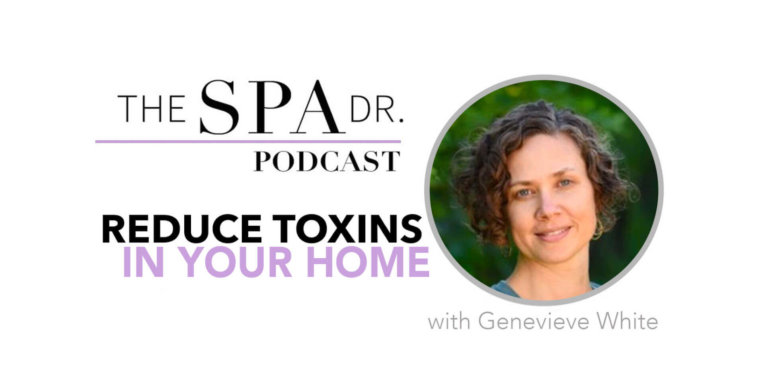
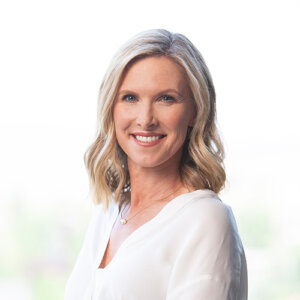
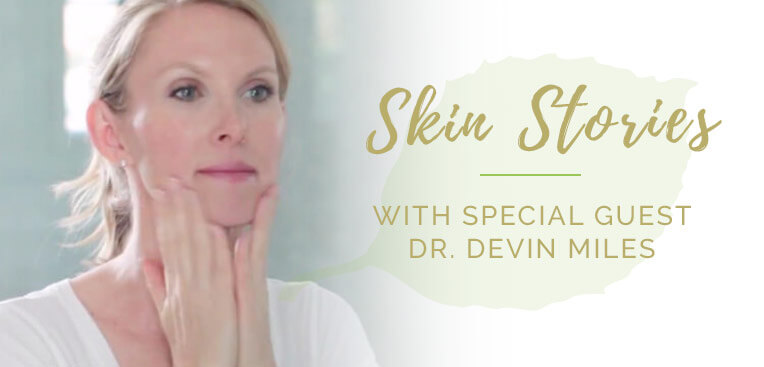
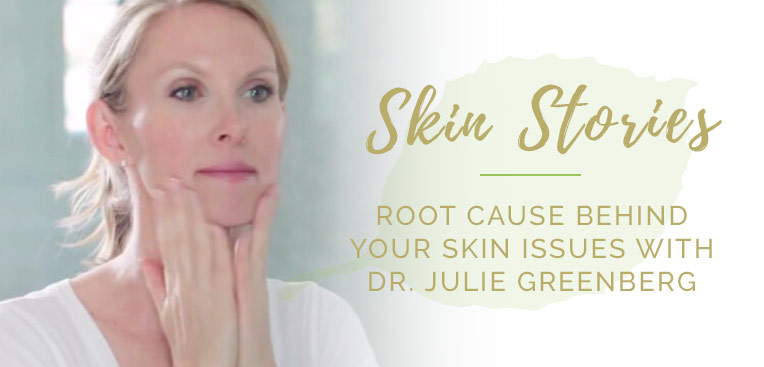
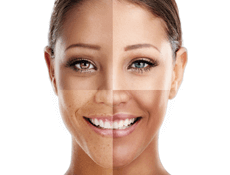
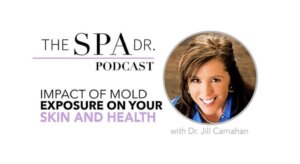
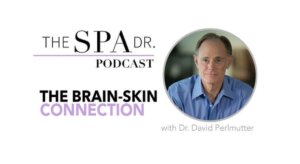
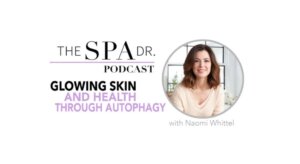
Reader Interactions